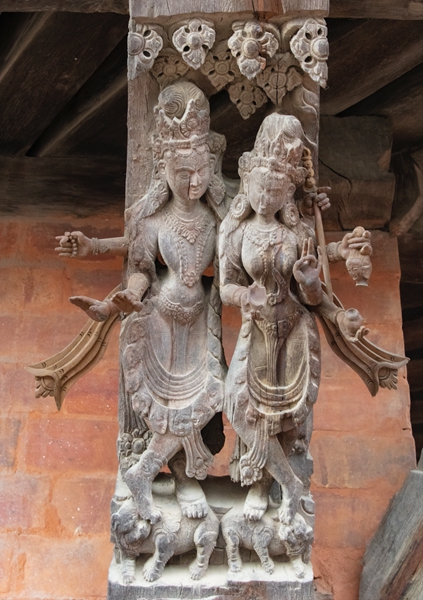Heritage of cooperation
By Yang Feiyue | China Daily | Updated: 2022-09-08 08:07

"To restore some big wooden components that run 6 meters long, we went to the depths of forests for raw material," Yuan says.
China's efforts in restoring the palace got recognition recently from Damodar Gautam, director general of Nepal's Department of Archaeology.
Gautam says Chinese experts consulted the Nepali side on how to preserve the complex's traditional value, design and originality.
"They were very cautious about maintaining the authenticity, integrity and value of the world heritage site," he adds.
Yuan has been interested in art history since her childhood and that led her to work in this field.
"I loved going to museums and art galleries," she says.
After getting a bachelor's degree in English from the Capital Normal University in 2012, Yuan joined postgraduate archaeological studies at the same university. During an academic exchange program in London as part of her postgraduate study, Yuan learned more about Chinese archaeological experts helping restore cultural heritage sites in Angkor, Cambodia.
Yuan grabbed the opportunity of a job at the Chinese Academy of Cultural Heritage after university in 2015.
During her first trip to Nepal for the palace project, she was impressed by how Nepali and Chinese experts emphasized the authenticity and integrity of the structure in their discussions about the restoration plan, which sounded familiar yet ambiguous to Yuan back then.
"It was clear, because many of the professional terms had been hammered into us by our teacher over and over again in our class," Yuan says.
"However, it would be difficult to have an in-depth understanding of them if one didn't work in the front line of cultural heritage protection," she says, adding that a great deal of knowledge and concept about historical heritage restoration wasn't available in books.
Over the years, Yuan has made approximately 10 trips to Nepal for the Basantapur Palace restoration project. She studied the cultural and artistic value of the palace, took charge of research and recorded the restoration work through a camera.
At the beginning, the Chinese restoration team had insufficient historical references to work with, especially for the collapsed parts of the complex.
























